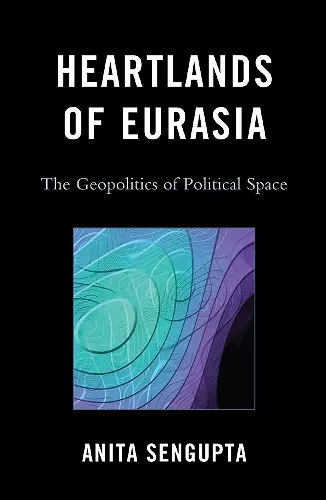Heartlands of Eurasia
The Geopolitics of Political Space
Format:Hardback
Publisher:Bloomsbury Publishing PLC
Published:16th Jul '09
Currently unavailable, and unfortunately no date known when it will be back

Heartlands of Eurasia explores how received metageographical knowledge informs the understanding of global processes and is subsequently transformed into geopolitical reasoning with foreign policy implications. It provides a detailed examination of writings, from both within the region and outside, that look into the significance of Halford Mackinder's heritage in the context of a vastly changed world situation. In particular, it attempts to examine how policy makers and strategic thinkers have used these geopolitical concepts as justification for their policy in the region. Finally, it attempts an analysis of the extent to which this policy thinking was translated into practice.
While the study looks into how the vision of the "pivotal" significance of a vast expanse of land finds its echoes in contemporary narratives, it also underlines the very creative ways in which Mackinder's ideas have been reinterpreted in keeping with the changing global dynamics. Making use of the way in which the region has been traditionally defined and the way in which the people defined themselves, the study brings into focus a debate on the usefulness of region or "area"-based studies that are located in geographical imaginations. Anita Sengupta uses this connection to examine the following issues: geopolitical imaginations and their relevance in identifying "areas" in the present context; the intersection between how areas are defined from an outsider perspective and how people define themselves; the extent to which these definitions have influenced policy; and the possibility or feasibility of the development of alternative geostrategic discourses. Mackinder himself did not specify the geographical area identified first as the "pivot" and later the "heartland," but his ideas were focused on the "closed heartland of Euro-Asia," an area that was unassailable by sea power. This study therefore centers its debates around the Eurasian space in general, though the focus is on the Central Asian region and Uzbekistan in p
The book is a fascinating and in-depth study about the interpretations and re-interpretations of Halford Mackinder's theory of 'pivot of history' and heartlands now understood as Eurasia. Although the theory has been debated and expanded over the decades, it has lost neither its significance nor its relevance. In Russia, the debate about Eurasianism is a perennial one. Where does Russia's destiny lie? Is Central Asia Mackinder's pivot of history? Viewed from the perspectives of space, identity, ethnic composition, and natural resources, Central Asia is the pivot and Uzbekistan its center. These aspects are here examined in detail, and the author is to be highly commended for incorporating the views of Central Asian scholars and leaders. A valuable contribution to knowledge and learning. -- Nirmala Joshi, India-Central Asia Foundation
ISBN: 9780739136065
Dimensions: 244mm x 162mm x 20mm
Weight: 497g
220 pages